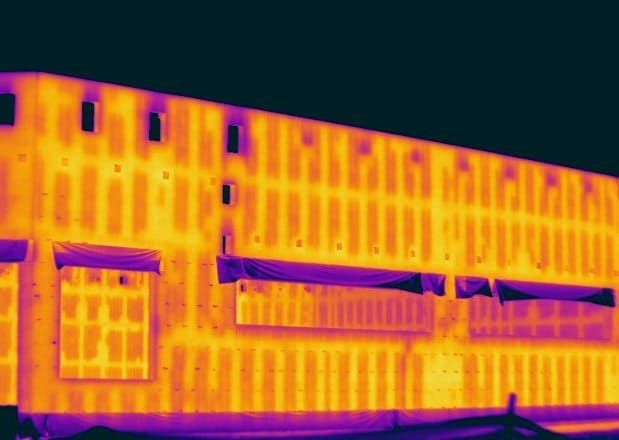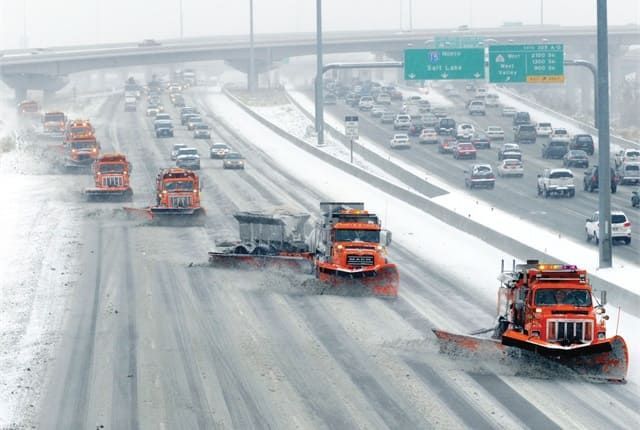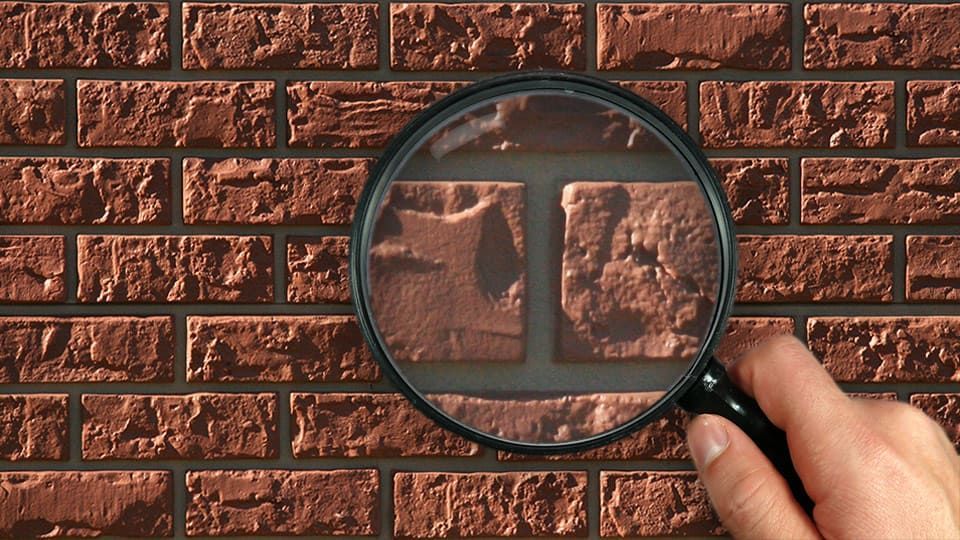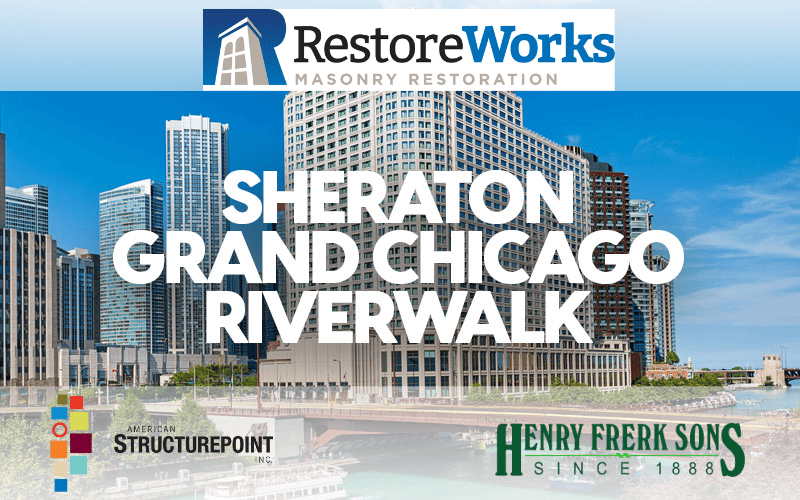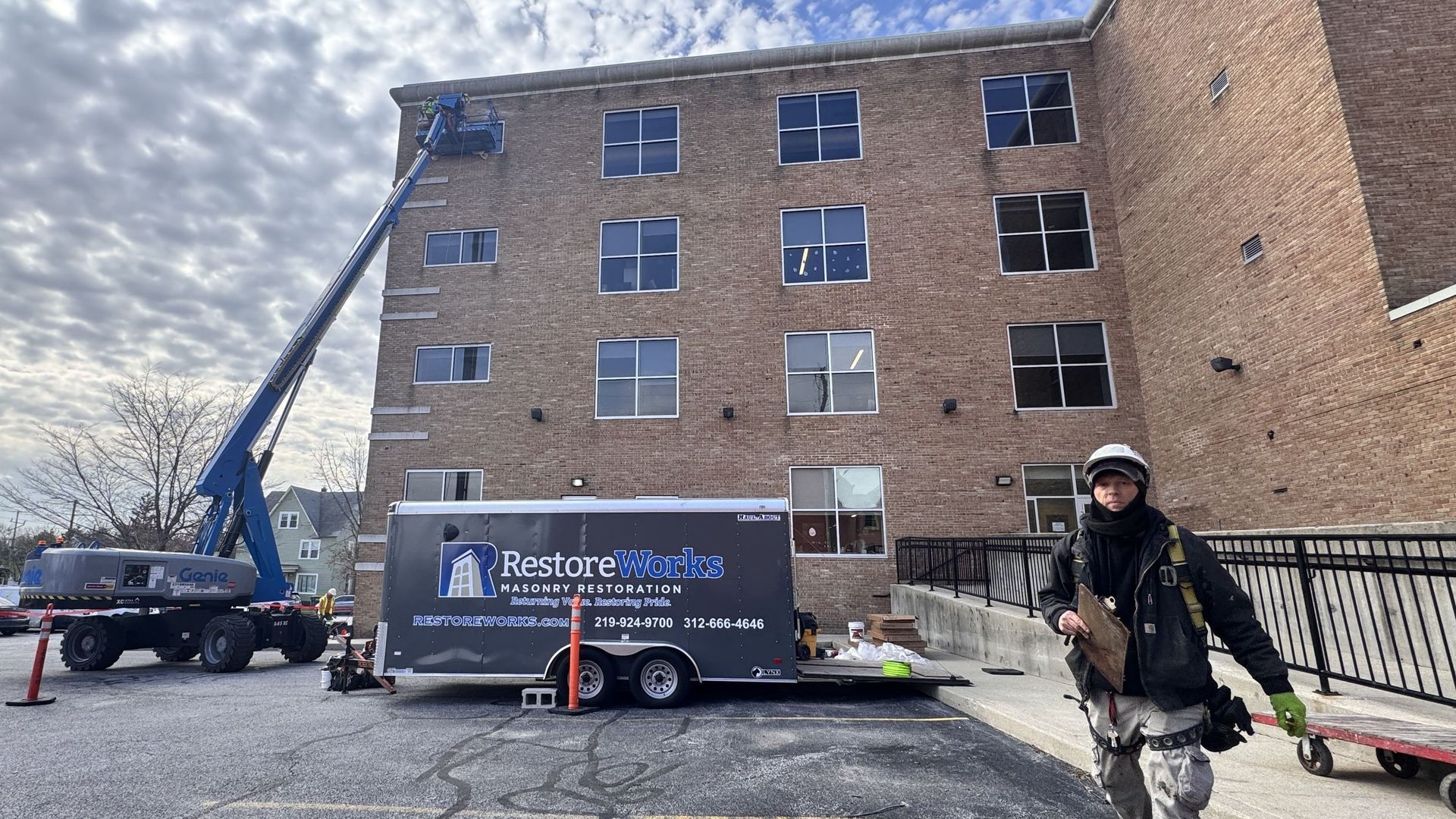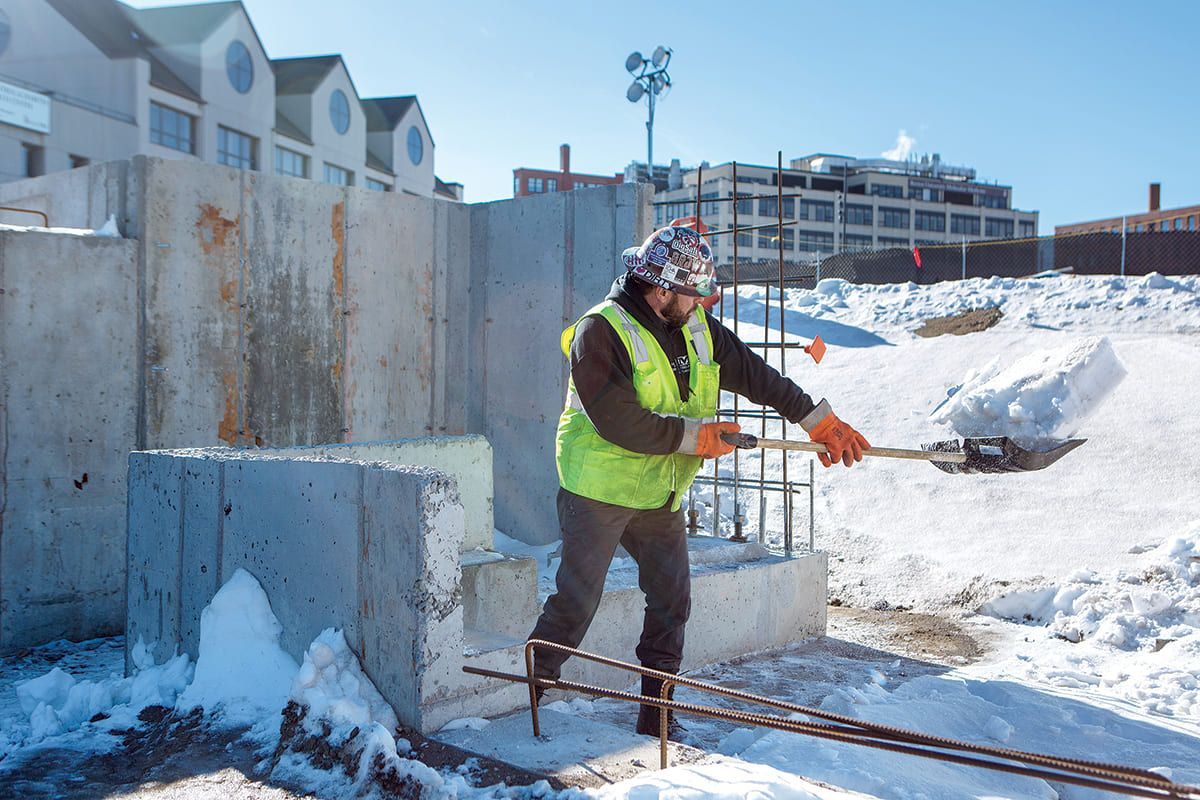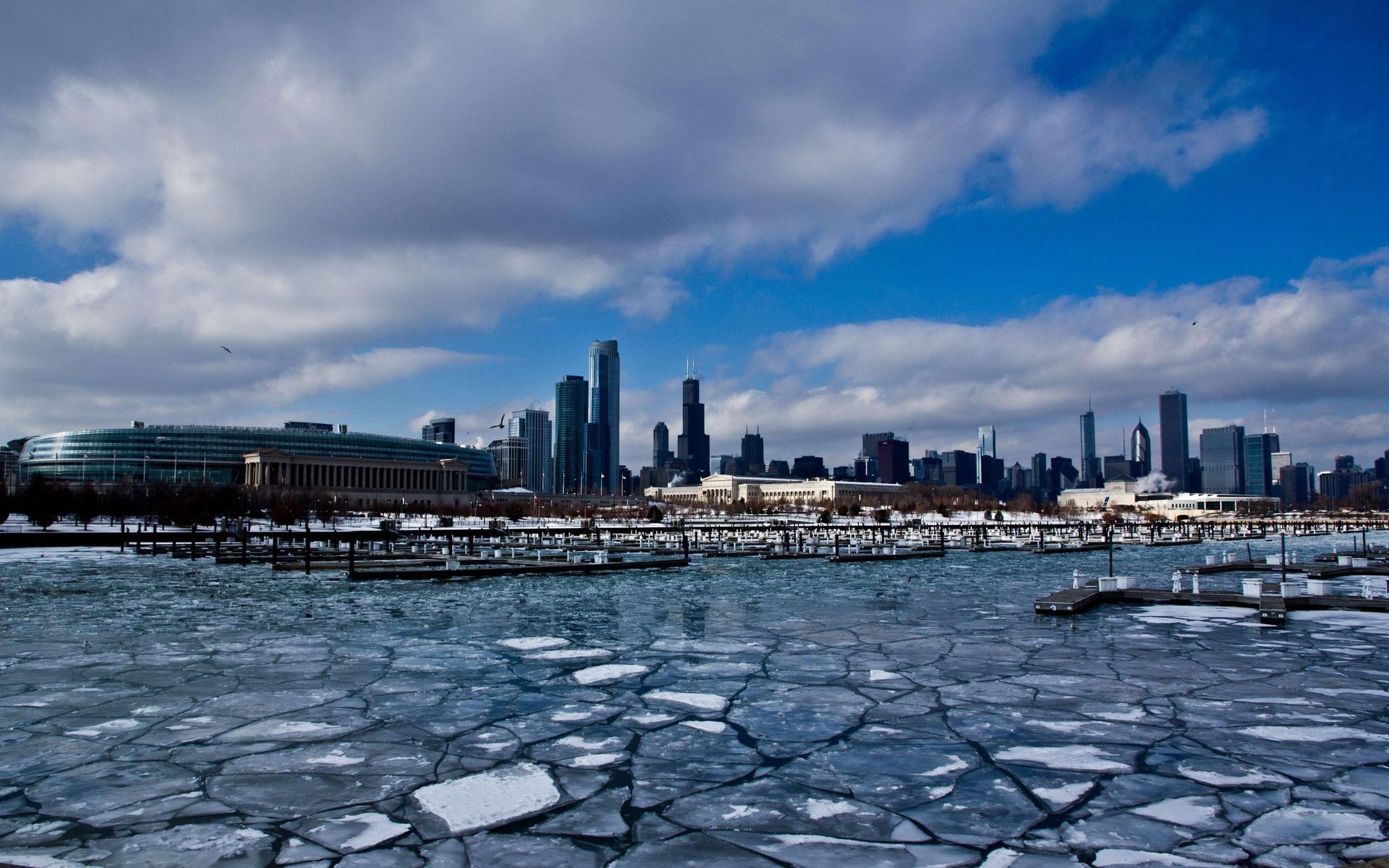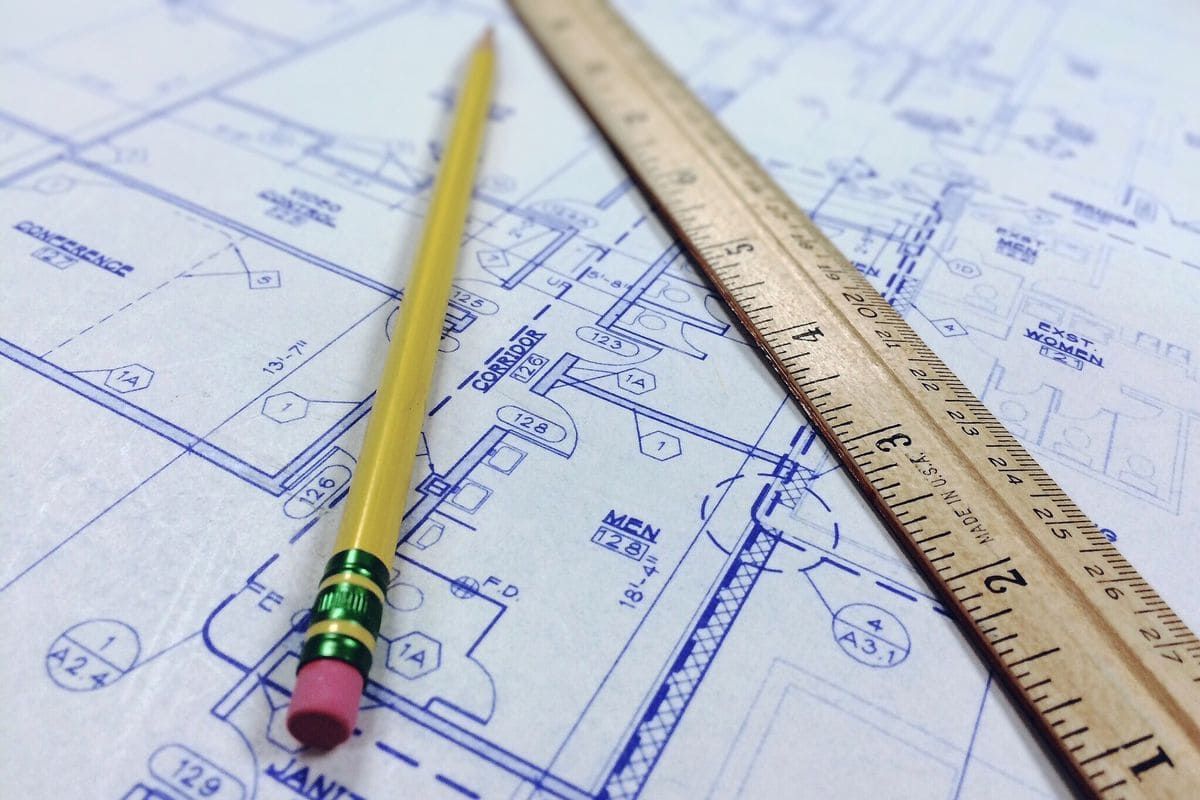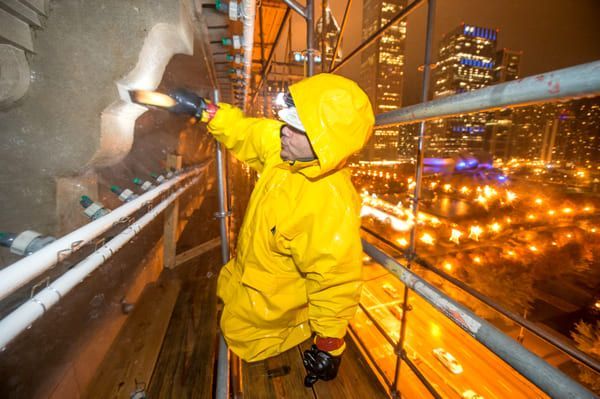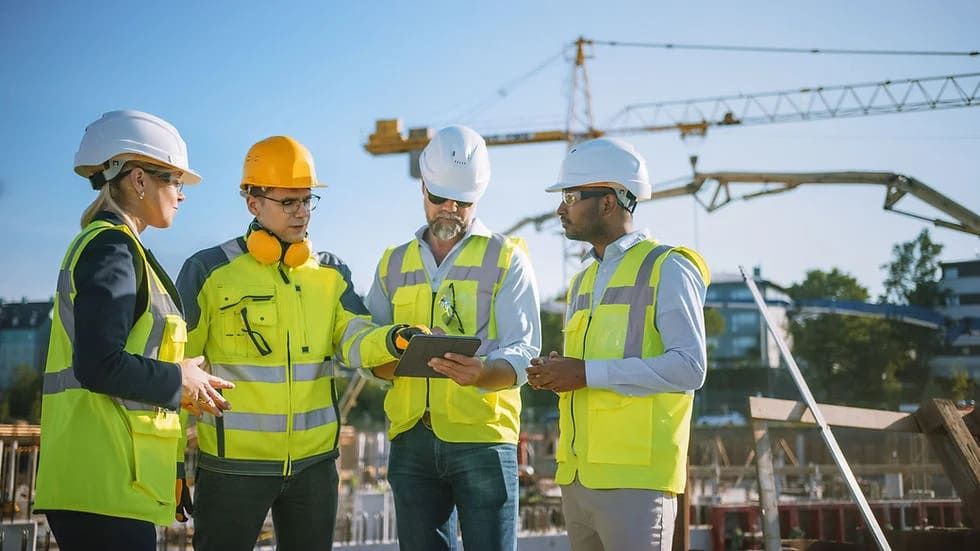When it comes to commercial masonry restoration, identifying issues early is important. Traditional inspection methods rely heavily on visual assessments, but many underlying problems, such as moisture infiltration, heat loss, and hidden structural damage, aren’t always visible to the naked eye. That’s where infrared thermography (IRT) comes in. This technology allows property managers, facilities managers, and engineers to detect hidden masonry issues before they turn into costly repairs.
What Is Infrared Thermography?
Infrared thermography is a non-invasive diagnostic tool that uses thermal imaging to detect temperature variations on a structure’s surface. These variations often indicate moisture intrusion, insulation gaps, or underlying damage that would otherwise go unnoticed. For masonry structures, this means the ability to pinpoint areas where concrete facade repair or tuckpointing might be necessary before visible deterioration occurs.
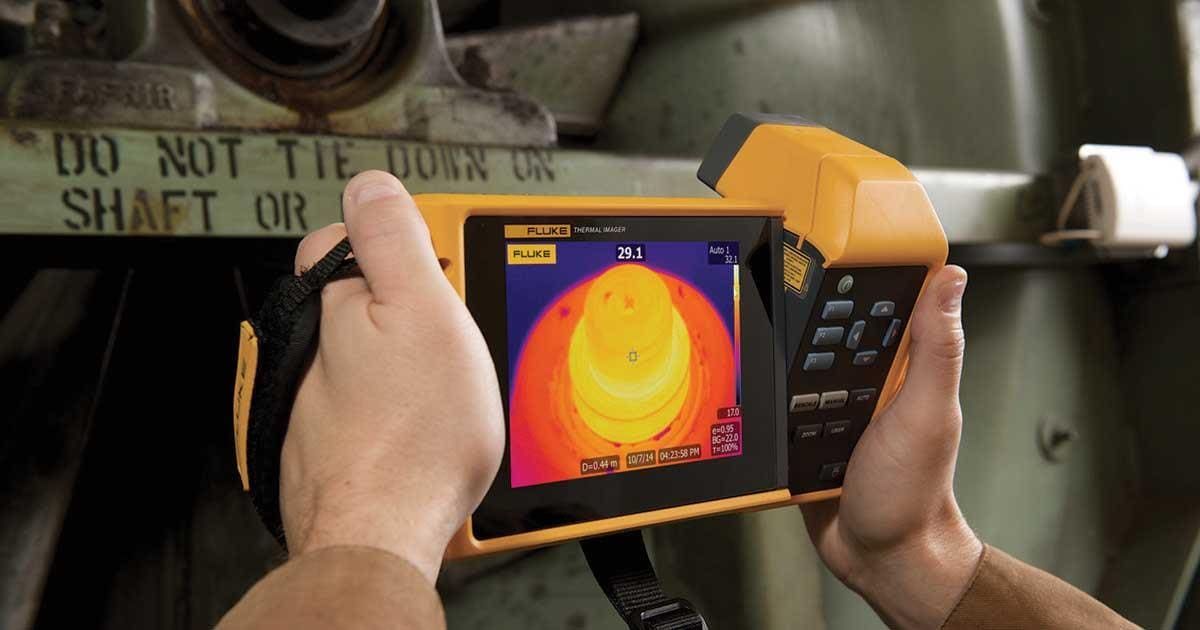
Key Benefits of Infrared Thermography in Masonry Inspections
1. Early Detection of Moisture Infiltration
Moisture is one of the most significant threats to masonry buildings. It can lead to efflorescence, freeze-thaw damage, and eventual structural failure. Infrared thermography identifies moisture retention by detecting cooler areas where water is present beneath the surface.
Example: The U.S. Army Engineer Research and Development Center (ERDC) has used infrared technology that allows rapid high-resolution detection of building envelope energy losses.
2. Identifying Hidden Structural Damage
Cracks, delamination, and spalling in concrete balcony restoration projects can often go unnoticed until they cause serious safety concerns. Infrared scans can reveal thermal anomalies that indicate voids or weakened sections within masonry walls and balconies. This information helps prioritize concrete balcony repair efforts, reducing liability risks for property owners and managers.
3. Improved Energy Efficiency Assessments
Buildings with deteriorating masonry often suffer from heat loss due to gaps and compromised insulation. Infrared scans provide clear visuals of heat loss areas, allowing for targeted interventions like masonry lintel repair or enhanced insulation strategies.
According to the Pacific Northwest National Laboratory, the 2021 IECC outlines key building envelope improvements that enhance energy efficiency, such as air leakage testing and the integration of opaque openings with HVAC systems.
4. Reducing Costs Through Preventative Maintenance
Reactive maintenance (waiting until damage is visible before addressing it) can be up to five times more expensive than proactive maintenance. Infrared thermography allows facility managers to detect issues early, allowing for commercial concrete facade restoration or restorative masonry cleaning before deterioration worsens.
5. Supporting Data-Driven Decision Making
Infrared thermography doesn’t just provide images. It actually generates quantifiable data that informs restoration priorities. By combining thermal imaging with expert analysis, engineers and project managers can develop accurate restoration plans.

When to Use Infrared Thermography
Not every masonry inspection requires thermal imaging, but it’s especially useful in the following scenarios:
- Pre-purchase or pre-lease inspections – Identify potential issues before committing to a property.
- Post-weather event assessments – Check for hidden damage after storms, freeze-thaw cycles, or extreme heat.
- Routine maintenance planning – Establish a proactive schedule for masonry inspections and repairs.
- Historic building preservation – Ensure structural integrity without invasive testing methods.
Partner with RestoreWorks for Masonry Assessments
At RestoreWorks, we integrate modern technology into our masonry inspection and restoration services. If your building needs specific repairs or a full restoration, our team delivers data-driven solutions to maximize its lifespan.
We also collaborate with qualified architects and engineers who use these same advanced processes. If applicable, we’d be glad to make an introduction.
Want to uncover hidden masonry issues before they become expensive problems? Contact RestoreWorks today for a free consultation for your commercial property.

